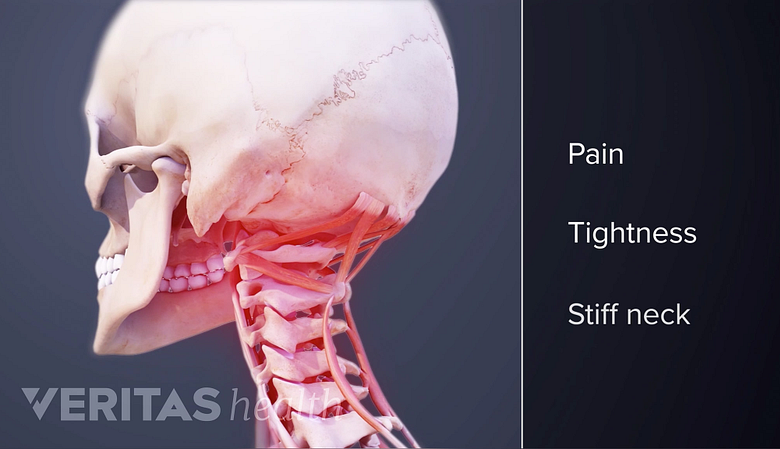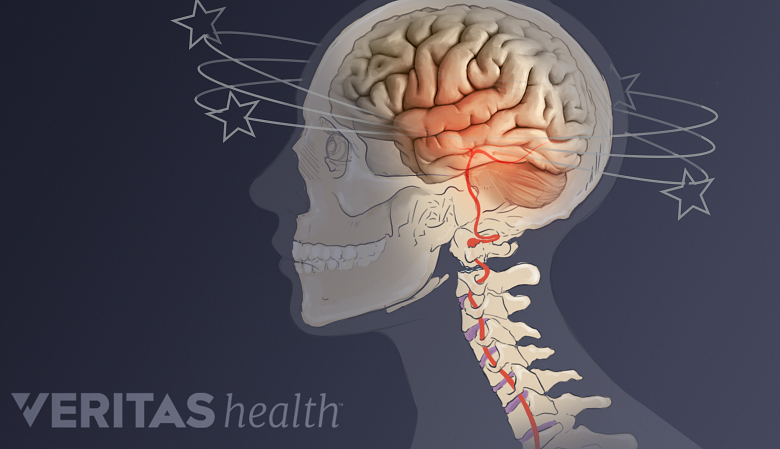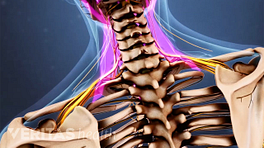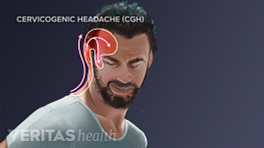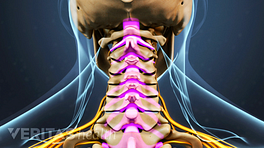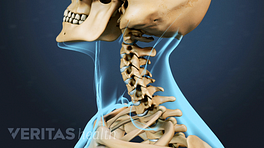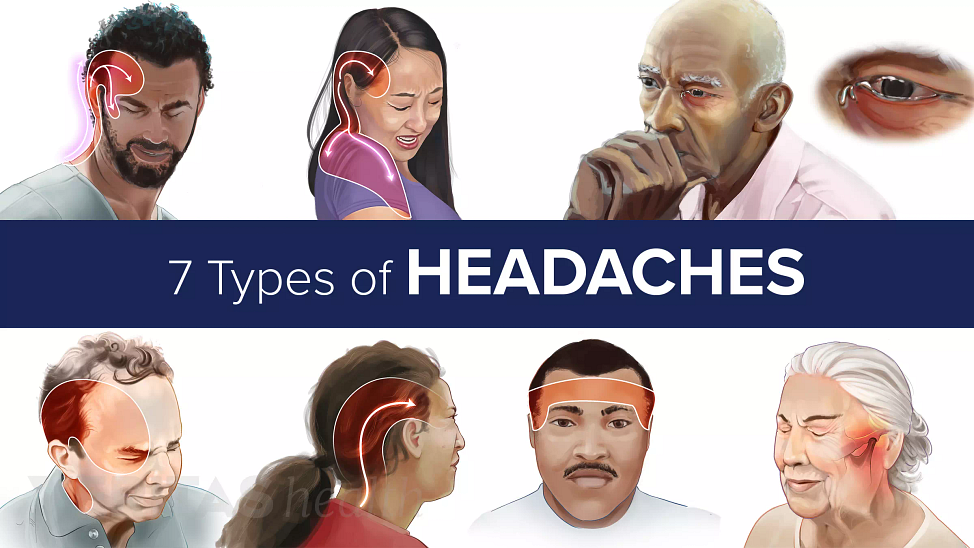Cervicogenic headache (CGH) pain symptoms range from mild or moderate discomfort to severe pain with limited neck mobility. CGH may occur as an intermittent or continuous pain that is typically felt in the head, neck, shoulder, and/or arm.
In This Article:
Common Symptoms of CGH
The CGH pain often begins in the back of the neck or head, causing neck stiffness and limited motion.
CGH symptoms are almost always side-locked, which means they occur only on one side of the head and/or neck. Common symptoms of CGH may include one or more of the following:
- Dull, moderate to severe intensity pain. The pain in CGH is most commonly described as dull and non-throbbing type and of moderate to severe intensity in the head and neck region.
- Reduced flexibility of neck. The pain typically starts at the back of the neck or head, which may lead to some neck stiffness and reduced range of motion.
- Pain in multiple areas. From the back of the head, the pain may extend toward the front following the scalp, forehead, area around the eye, temple, and area surrounding the ear.
- Blurred vision in one eye. Blurring of vision may be felt in the eye of the affected side
- Pain beneath the neck. Pain in the shoulder, arm, or between the shoulder blades is also common.
It is possible to have CGH without accompanying neck pain. Sometimes cervical joint issues may not be painful continually but may be tender to touch. This is also indicative of a neck issue giving rise to headache. The frequency and duration of pain may vary every time CGH occurs.
Less Common Symptoms of CGH
Dizziness is a rare symptom of cervicogenic headache.
Examples of less common symptoms of CGH include:
- Nausea
- Increased sensitivity to excessive light or sound
- Dizziness
- Swelling around the eye of the affected side
- Difficulty in swallowing
- Headache and neck pain affecting both sides of the head and neck
- Pain felt on touching the opposite side of the head or face during a severe attack of CGH, possibly due to an injury to the trigeminal nerve (responsible for sensation in the face) and/or spinal nerves in the cervical spine
Some conditions, such as migraines and tension-type headaches, share similar characteristics as CGH in terms of the location and symptoms. So, a careful evaluation is needed rule CGH in or out. It is also possible for CGH to occur with a migraine headache.
Triggering Factors for CGH
In most cases, CGH pain may start or worsen as a result of certain actions. A few examples of actions that can trigger an episode of CGH, or worsen its symptoms, are:
- Application of pressure externally such as firmly pressing over the base of the skull or cervical spine region
- Abnormal postures or movements of the head or neck
- Abnormal sleeping posture (especially sleeping on the stomach) may result in pain upon waking up, which generally subsides later on
- Valsalva maneuver—an attempt to expel air with the mouth shut and nostrils pinched tight. Examples of this process are coughing, sneezing, laughing, and bearing down on the toilet.
The most common triggers are related to position and application of external pressure. CGH symptoms triggered by cough or Valsalva maneuver may indicate more serious underlying conditions such as tumors or cervical vertebral artery dissection.
